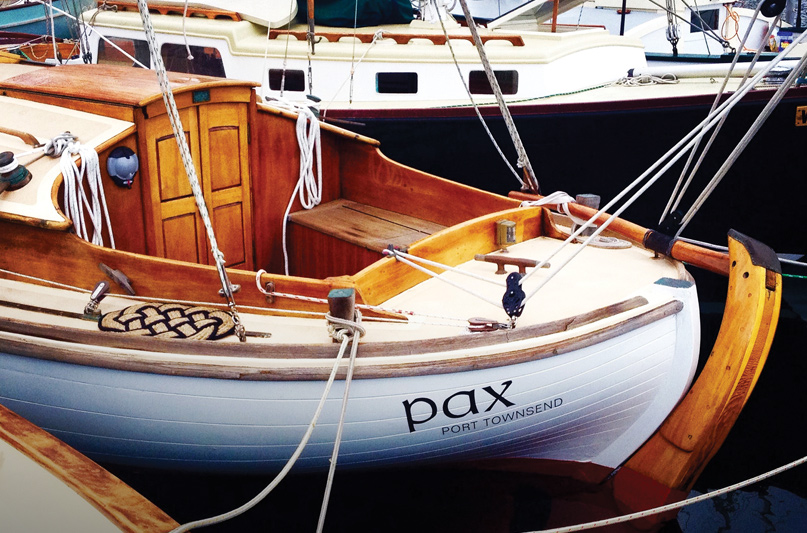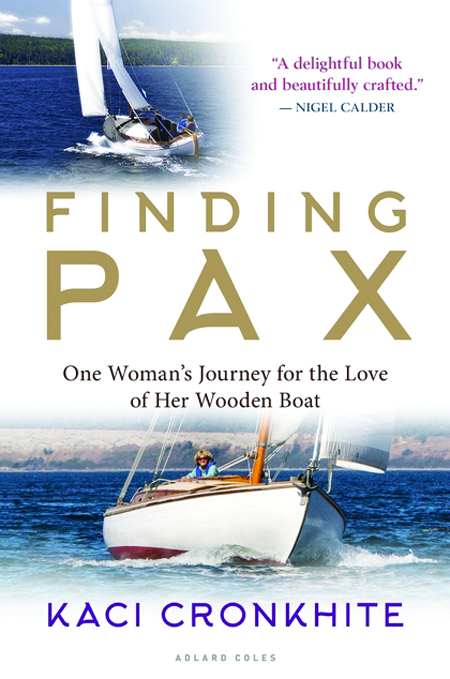 When we found our Cape Dory sloop, she was tied to a guest dock in Port Townsend, the hull riding on the dock due to the absence of any sort of fenders. The rotten docklines were one gust from breaking. She was a mess, but she was exactly what we were looking for. In the three years it took to rebuild her, I found a lot of little clues about her past. Some “hidden” whisky bottles, old 8-track tapes lost under galley furniture, even some faded and water-stained notes from cruises decades ago. We developed quite the backstory for her previous owners, but it was all just entertainment for us as we toiled at pulling wire and repainting every surface we could find. However, it was through these clues that I eventually found the original owner, who told me about taking our little sloop around the world. She had pedigree. That pedigree added to her personality and filled us with confidence.
When we found our Cape Dory sloop, she was tied to a guest dock in Port Townsend, the hull riding on the dock due to the absence of any sort of fenders. The rotten docklines were one gust from breaking. She was a mess, but she was exactly what we were looking for. In the three years it took to rebuild her, I found a lot of little clues about her past. Some “hidden” whisky bottles, old 8-track tapes lost under galley furniture, even some faded and water-stained notes from cruises decades ago. We developed quite the backstory for her previous owners, but it was all just entertainment for us as we toiled at pulling wire and repainting every surface we could find. However, it was through these clues that I eventually found the original owner, who told me about taking our little sloop around the world. She had pedigree. That pedigree added to her personality and filled us with confidence.
When I first read Finding Pax by Kaci Cronkhite, I admit I was skeptical. Making the story of a boat interesting and readable is a challenge few writers can manage. I expected a dry, itemized list of a boat’s history. What Cronkhite delivers, however, is a love story threaded with obscure maritime history and lessons about how people and their boats are intertwined.

From her perch as the director of the Wooden Boat Festival in Port Townsend, Cronkhite had every opportunity to find and fall in love with any manner of boat. But she wasn’t looking for a boat. Her boat found her. It is lucky for Cronkhite and, frankly, for her boat Pax that they found each other. Cronkhite had the resources to do the needed repairs to the wooden hull. She also had the sense to treat the 25-foot Danish spidsgatter with the respect it deserved. Her desire to preserve and honor the boat’s heritage led her on a personal quest to discover everything she could about how a boat built the 1930s in Denmark found its way to the Pacific Northwest. What she finds is a series of mysteries and forensic dead ends. Undeterred, she uses every clue that comes her way to puzzle together the amazing history of an amazing yacht.
What sets this book apart from the dozens of others I’ve read on similar themes is the care and craft of the writing. Cronkhite, who holds an advanced degree in writing, tells her story and the story of Pax with poetic care. It reads beautifully and pulls us through the story effortlessly.
So little of this book is actually about sailing, which is part of its charm. In less able hands, this story could easily become about the technical aspects of her rebuild or her time on the water as a reborn pleasure yacht. But Cronkhite takes care to make this story about the boat and her history. It is a lovely read.
After reading Finding Pax, I found myself wishing there was a genealogy site for boats. When we buy a used boat, I wish it came with all of the ship’s logs and stories and photos of its past. Imagine what a yacht built in the 1970s has seen. Not all our boats made their way here from Nazi occupied Europe like Pax, but every boat has a story to tell. Finding Pax just may send you looking for the past of your own boat.